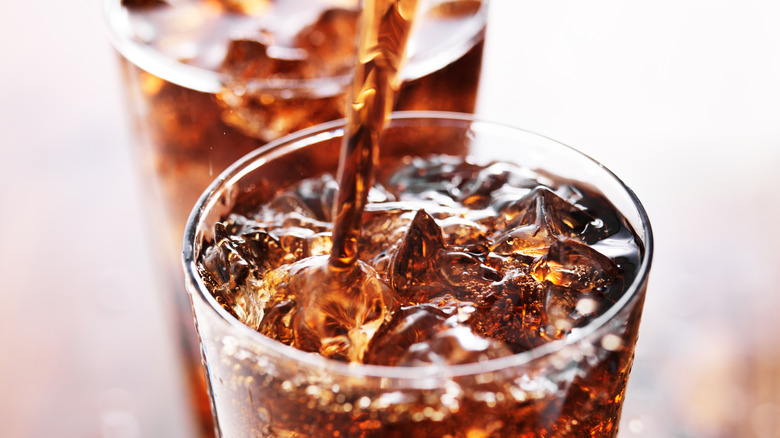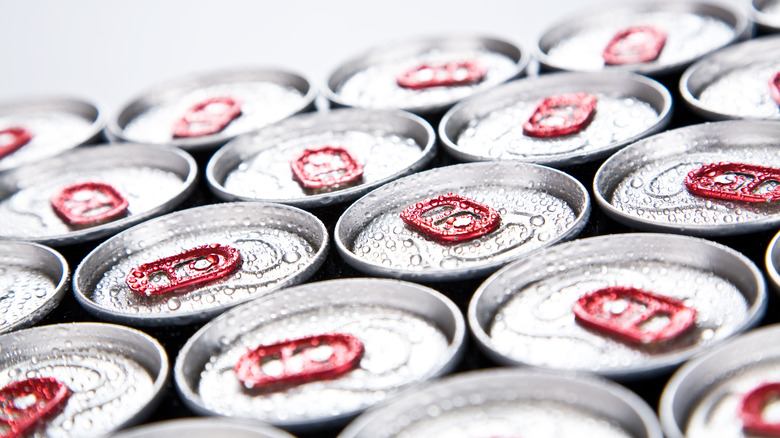The Clever Technique For Pouring Soda So It Doesn't Fizz Over
Pouring, then waiting, then pouring, then waiting — the process of moving a carbonated drink from a can or bottle into a new cup is a multi-step ordeal that nobody likes having to perform. Thankfully, nobody really has to: All it takes to get a smooth, uninterrupted pour every time is to always pour your soda right onto the side of your glass.
The key factor here is in minimizing the impact of the drink against a hard surface. For the same reasons that it explodes when shaken too hard before opening — and why you should never freeze an unopened carbonated drink — a soft drink fizzes up more the harder it hits the glass. Going from the opening of a bottle or can all the way to the bottom of a new glass results in a pretty harsh splash, which is why you'll find yourself with more fizz than drink quickly enough. If you tip your glass and pour right against the side of it, however, you'll be reducing the amount of distance your soda is falling before hitting anything. The drastically dampened impact means minimal fizz and a smooth pour.
Using a soda can's tab to make things even easier
Bartenders and beer sommeliers will recognize this trick as the generally accepted "correct" way of pouring beer. While the textures of beer foam and soda fizz are drastically different, the way they form operates on the same logic and can be minimized with the same technique. If you're the type who enjoys the taste of canned soda over bottled ones, you can take it a step further to make things even easier on yourself:
As demonstrated by Jordan Howlett, pushing the tab upright to balance the can on top of the glass results in a fast, almost hands-free pour with no overflow. However, this faster method does come with one caveat. The drastic angle forces you to pour much faster in order to avoid spills, which does still result in a momentary burst of fizz. If you're using a shorter glass, this could very well result in fizzy overflow regardless. Slower pouring right onto the glass at a 45-degree or lower angle will let you control the speed and guarantee a spill-free pour every time.

